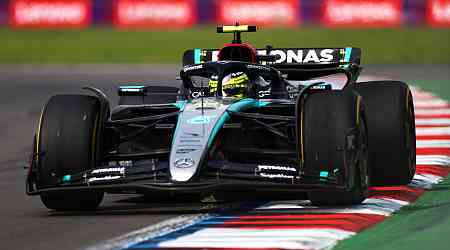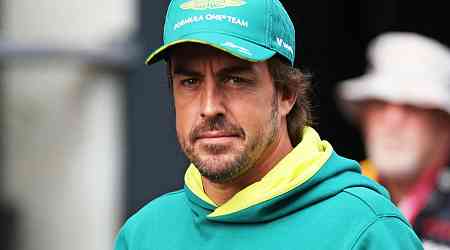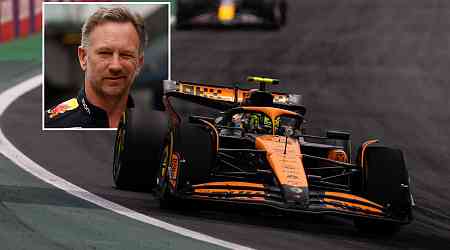FORMULA ONE drivers may all have their own flair and temperament on the track.
However, from seven-time world champions like Lewis Hamilton to rookies such as Franco Colapinto, every driver in the motorsport has one thing in common: an FIA Super Licence.

Across the vast and incredibly diverse world of motorsport, all sorts of licences are issued for different events.
However, for F1, the FIA – the governing body of global motorsport – demands a full top-level Super Licence.
Drivers must strictly adhere to the rules of the licence or face a race ban, as was the case with F1 star Kevin Magnussen earlier this season.
Below we go through the rules and fundamental requirements that tie every F1 driver and F1 aspirant together, as detailed in the International Sporting Code:
Must be at least 18 years old
The first requirement for the Super Licence is a simple one, be at least 18 at the time of their first race.
That being said, exceptions to this rule have been granted for those aged at least 17.
The reason for this exception is explained as follows in the Appendix L, Article 5 of the Sporting Code: “At the sole discretion of the FIA, a driver judged to have recently and consistently demonstrated outstanding ability and maturity in single-seater formula car competition may be granted a Free Practice Only Super Licence
at the age of 17 years old.”
Max Verstappen is the only case of this exemption being made, with his appearance at the age of 17 years and 166 days old at the Australian Grand Prix in 2015 making him the youngest driver in F1 history.
BEST FREE BET SIGN UP OFFERS FOR UK BOOKMAKERS
Holder of an International Grade A competition licence
The second requirement is that drivers have an International Grade A competition licence.
The Grade A licence is earned through competition in lower grade competitions such as F2, F3, karting, or Rally cars.
This system was introduced in 2021 and came into force from 2022.
The then-FIA Safety Director, Adam Baker, said: This represents one of the biggest changes to the FIA International Driver Licence structure for a decade, and is the culmination of more than two years of hard work between the sporting departments within the FIA, the FIA Sport Commissions and a working group of National Sporting Authorities.”
Pass an FIA theory test
The third point in the code is as follows: “The driver must
successfully complete a question session regarding the most important points of the International Sporting Code and of the F1 Sporting Regulations.”
For any later requests, the team must certify they have held a briefing with the driver about the most important points in the International Sporting Code.
Completed at least 80% of each of two full seasons of any of the Championships reported in Supplement 1 of the regulations
A driver cannot hope to stand in F1 without a strong foundation of experience in the junior single-seater categories.
That is why at the first time of application, drivers must have completed at least 80 per cent of two full seasons of Championship specified in Supplement 1 of the regulations.
These series include, but are not limited to, F2, F3, IndyCar, Formula E, FIA WEC/Hypercar, DTM, Nascar and F1 Academy.
F1 reporter Isabelle Barker's prediction

I EXPECT Max Verstappen to go all guns blazing over the next six-rounds. I also think his experience and aggression could give him the edge.
It seems too little too late for Norris showing consistency, despite that dominant win in Singapore last time out.
You can’t help think what could have been had he sorted out his first-lap issues sooner.
Norris needs to prove he has the mental fortitude, because we all know he’s got the speed, the team and the fastest car.
Verstappen has endured an eight-race winless streak, but he has still managed to score points, with three second-places during that time.
So I think the Dutchman will lift his fourth world-title this season, by the skin of his teeth.
Accumulated at least 40 licence points
However, it is not simply enough to race in the lower levels.
Drivers must accumulate a total of 40 licence points over the previous three seasons of racing.
Different series yield different award values. For example, winning the championship in both IndyCar or F2 gives a driver the full 40 points they would need to be eligible to enter F1.
Beyond this, F2 is the most rewarding series for licence points, with a driver even finishing in 10th able to acquire three licence points.
However, drivers such as Oliver Bearman have been allowed to compete in F1 without a full F2 season under their belt due to performing well in series below such as F3, with the aggregate over the last three seasons coming into play.
The requirements are slightly reduced for returning F1 drivers like previously seen with Fernando Alonso, with the licence points required put down to 30.
Drivers coming back must have completed at least 300km in a representative F1 car consistently at racing speeds over no more than two days and completed not more than 180 days prior to the application.
Renewing F1 stars are also considered for a renewal at the sole determination of the FIA to have recently and consistently demonstrated outstanding ability in single-seater formula cars .
Not accumulating 12 penalty points
A 12-month probation period comes into play after a driver is issued a licence, with the FIA able to take away the licence at any time if standards are not being met.
Once drivers have a licence, they must then stay within the rules and avoid earning 12 penalty points on their licence.
Magnussen failed to do this earlier in the season and was subsequently banned from the Azerbaijan Grand Prix.
The Dane was the first to fall foul of this penalty point ban rule, but that saw his penalty points reduced to zero.
The move to the penalty system was introduced in 2014 with an eye on targeting repeat offenders who cause crashes. Causing a collision is worth three penalty points against the Super Licence.
Following the Mexico Grand Prix, Alonso sits on eight points along with none due to expire until the end of March 2025, while Verstappen’s double penalty incident with Lando Norris saw him net two points and move up to six penalty points.
 Complete F1 2024 race calendar – details on every Grand Prix and start time this year
Complete F1 2024 race calendar – details on every Grand Prix and start time this year 

































